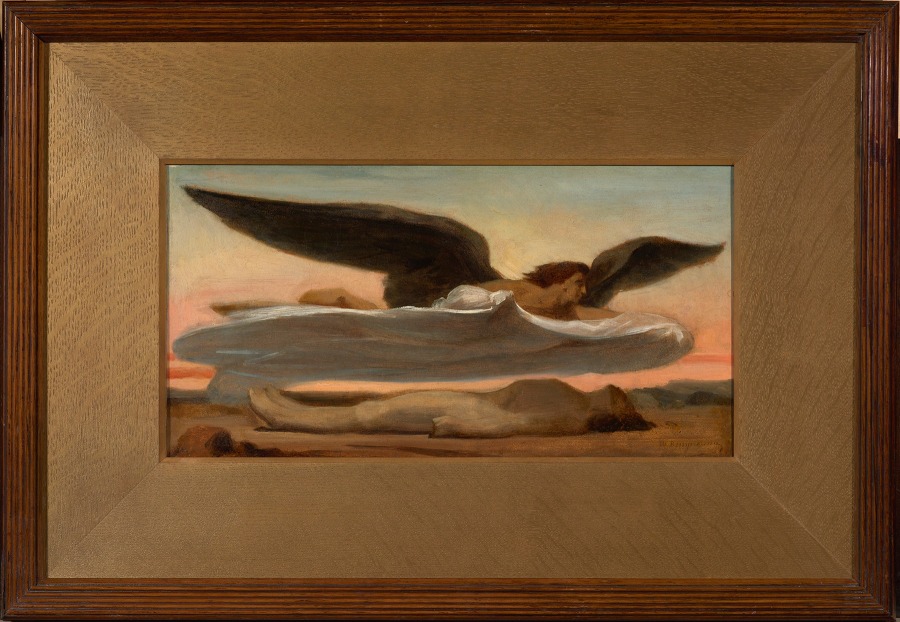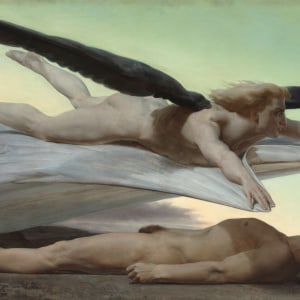Provenance
Private collection, France.Catalogue note
Bouguereau’s powerful painting, Égalité, was his entry to the 1849 Paris Salon; he was only twenty-four years old. (fig. 1). As so brilliantly discussed by Louise d’Argencourt in the catalogue for the 1984 Bouguereau retrospective (exh. cat., Paris, 1984, pp. 140-142), Égalité was Bouguereau’s response to the turbulent social and political climate of 1848, and to his own internal questioning about his future success as an artist. His thoughts were conceptualized in an inscription on one of the several preparatory drawings for the painting: “Egality. When the Angel of death waits on your doorstep, what good will your life have been if you have not been useful on this earth?” (L. d’Argencourt, p. 141). The personification of this concept is clear in Bouguereau’s painting – two figures, a man lying lifeless, his body soon to be covered by a shroud and the Angel of Death, who approaches with a powerful force.
Our painting is one of two known oil sketches for the composition, and like any preliminary study, we are provided a “behind the scenes” look at the transformation from sketch to final painting. In the oil study, Bouguereau has already established the concept and the composition. However, the changes to the final painting combine to make the Salon version a more dynamic and powerful interpretation of the subject. For example, in the study, the Angel is partially concealed by a large drapery and hovers over the lifeless body; there is no sense of motion, and his wings comprise most of the composition. In the final painting, the angel is naked, perhaps Bouguereau made this switch to show the Salon jury his skill in painting the musculature of the human body, something he would have perfected in his rigorous academic training. The angel’s wings are now razor thin, and almost black. There is a visible sense of speed and motion as he glides into the scene, almost like a bird of prey who has spotted its victim. Bouguereau also changes the color of the hair from brown in the study to light blonde in the final painting.
The Salon version of Égalité is now in the Musée d’Orsay, having remained with Bouguereau’s heirs in his studio on rue Notre Dame des Champs until 2009. The appearance of our oil sketch provides yet more insight into Bouguereau’s painstaking process, which almost always resulted in faultless perfection. It is a privilege to be a witness to his thinking and creativity.






